Are AI/virtual influencers the future, or just hype?
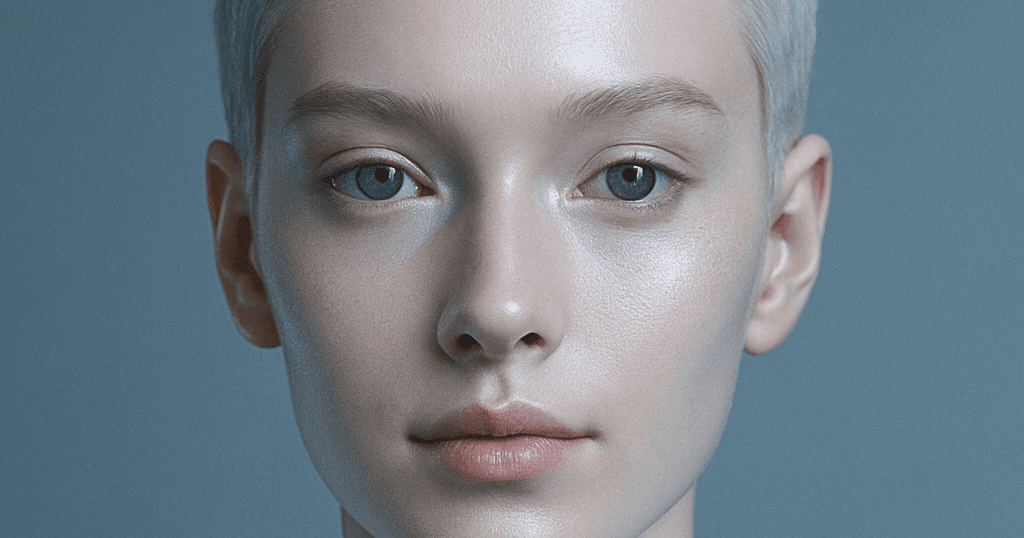
Tl;dr
- It’s becoming impossible to differentiate between a real human and an AI model on the internet.
- Storytelling matters the most if you want to make money. You need to know what resonates with your audience and what doesn’t. Lil Miquela does it really well. The brand integrations are really solid too!
- Platforms are being flooded with AI accounts, and there’s no way to detect AI followers as of now. Trust will massively decrease on the internet.
- The hard part, i.e. being human and showing your human‑ness will always be more valuable as it accrues the most trust. Live streams, communities, and real interactions are bound to become more valuable.
Table of contents
- What is a virtual/AI influencer?
- Why this matters now
- How they’re made: 6 real pipelines
- Brand examples & pop culture
- My learnings
- Engagement, money & what actually works
- Trust, disclosure & detection
- My experiments & key takeaways
- Faqs
- Further reading
What is a virtual/AI influencer?
Simply put, an AI / Virtual influencer is an influencer that does not exist in real life.
But why is it important to study and understand this trend?
Because these influencers are, quite literally, changing the dynamics of social media and how we interact with people online.
Why this matters now
The global virtual influencer market size is expected to reach $45.82 billion by 2030, growing at a CAGR of 38.9% compared to 17.9% for the real influencer market.
Lil Miquela, one of the most popular virtual influencers, was named as one of TIME’s most influential people on the internet amongst big names like Rihanna, Donald Trump, Kanye West, etc.
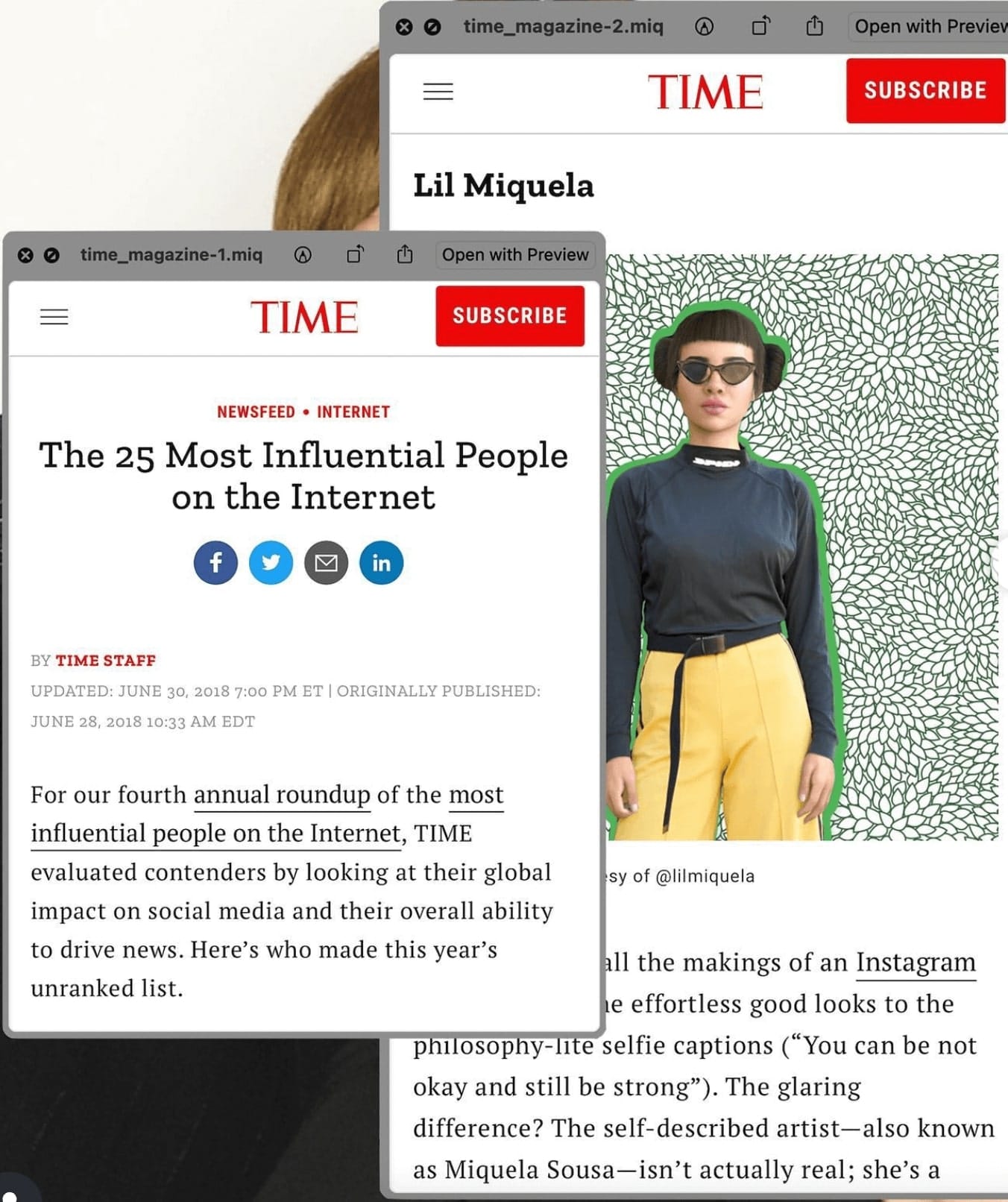
Let that sink in!
Can TIME’s list be influenced? I don’t know. But she is the first virtual / AI influencer to be included in such a list!
This was enough of a reason for me to dig deeper.
How they’re made: 6 real pipelines
Several tech startups and creative studios across the world are creating and enabling the creation of —
1) High‑fidelity virtual humans that look exactly like real ones
See metahuman by unreal engine for example.
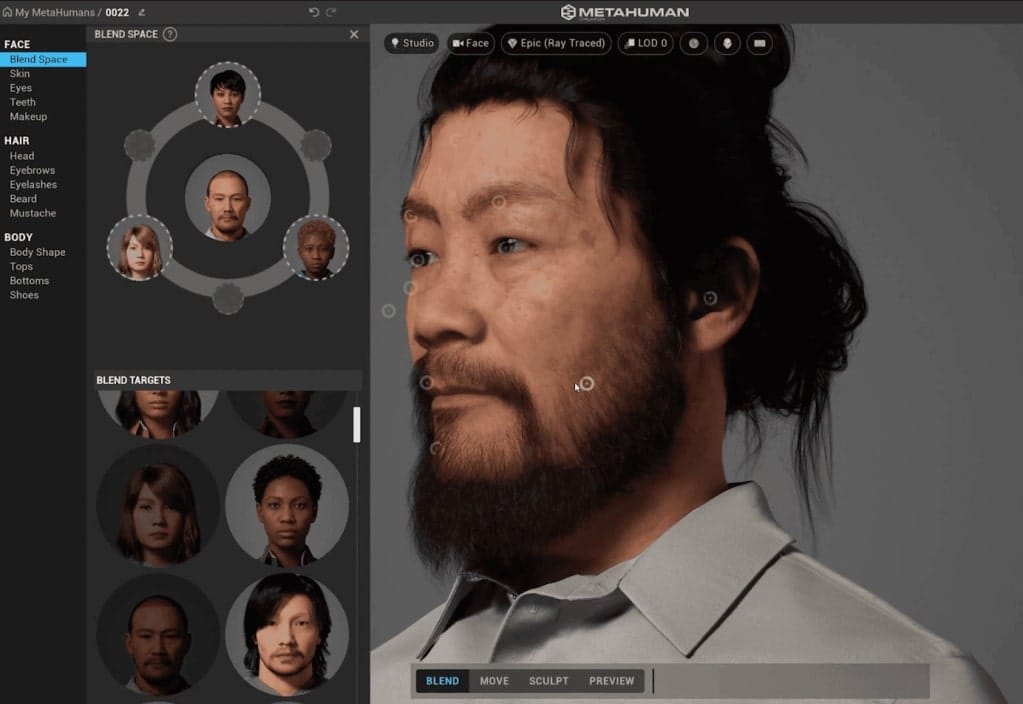
As a result, we have AI generated influencers like Lucy that look real, but are actually not.
Don’t want to generate a fake super realistic 3D human model?
Heck, you can clone yourself and in 5 year’s time, nobody will be able to tell the difference!
This YouTuber made a 3D model of himself and nobody could catch him until he reveals it at 2:29 of the video:

2) AI face swap (or deepfake) where the body is real but face is AI
Example: Naina, created by AVTR meta labs in India, collaborating with Puma, Pepsi, Titan, Boat, etc.

There are many tools out there that allows us to create such AI face swap / deepfake videos for free.
The thing to note here is that she’s not completely AI generated. The creators are probably using Indian stock footage (or someone else’s real footage) and superimposing an AI generated Indian face onto the videos.
It’s also worth noting that most of the engagement on such accounts is from low quality followers or AI generated accounts, which we’ll come to later in this post.
3) Animated 3D cartoon characters
Superplastic has raised over $80M in the last 7 years to venture into the creation of animated characters and launch them into social media.
Their two most popular characters Janky and Guggimon have millions of followers across Instagram, TikTok, and YouTube.
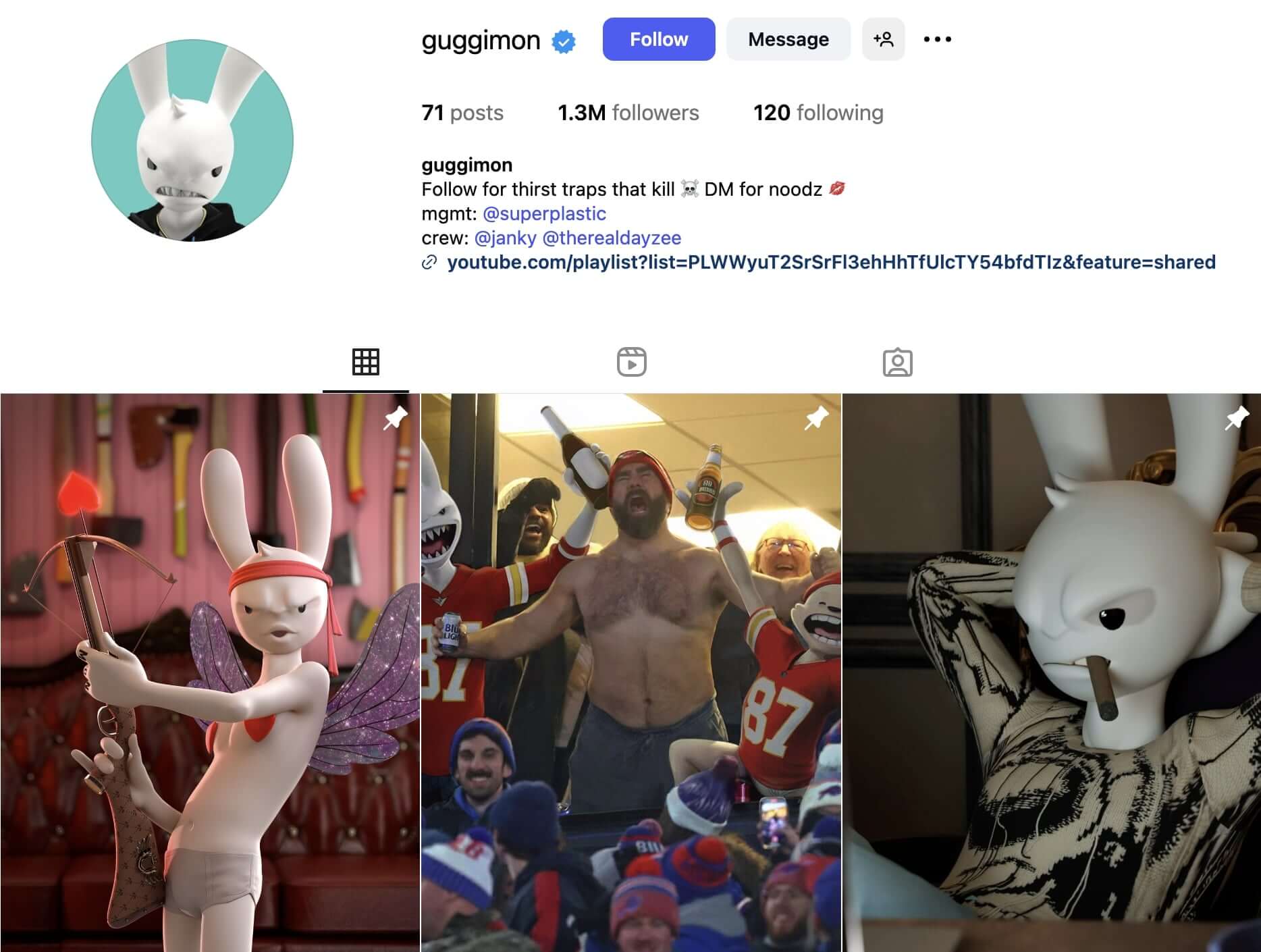
The brand sells tens of millions of dollars in real and virtual products annually and has already collaborated with the likes of Gucci, Fortnite, Mercedes Benz, Tommy Hilfiger, Post Malone, Paris Hilton, Weeknd, and many more. Their streaming show on Amazon prime is coming soon too!
It is evident that AI is making 3D character generation and animation easier. The only limiting factor is creativity and imagination.
4) AI robot models
Created by a startup called Brud, Lil Miquela is perhaps THE most famous virtual influencer of all time!
Brud has raised over $130M from Sequoia Capital and others, and has been acqui-hired by Dapper labs.
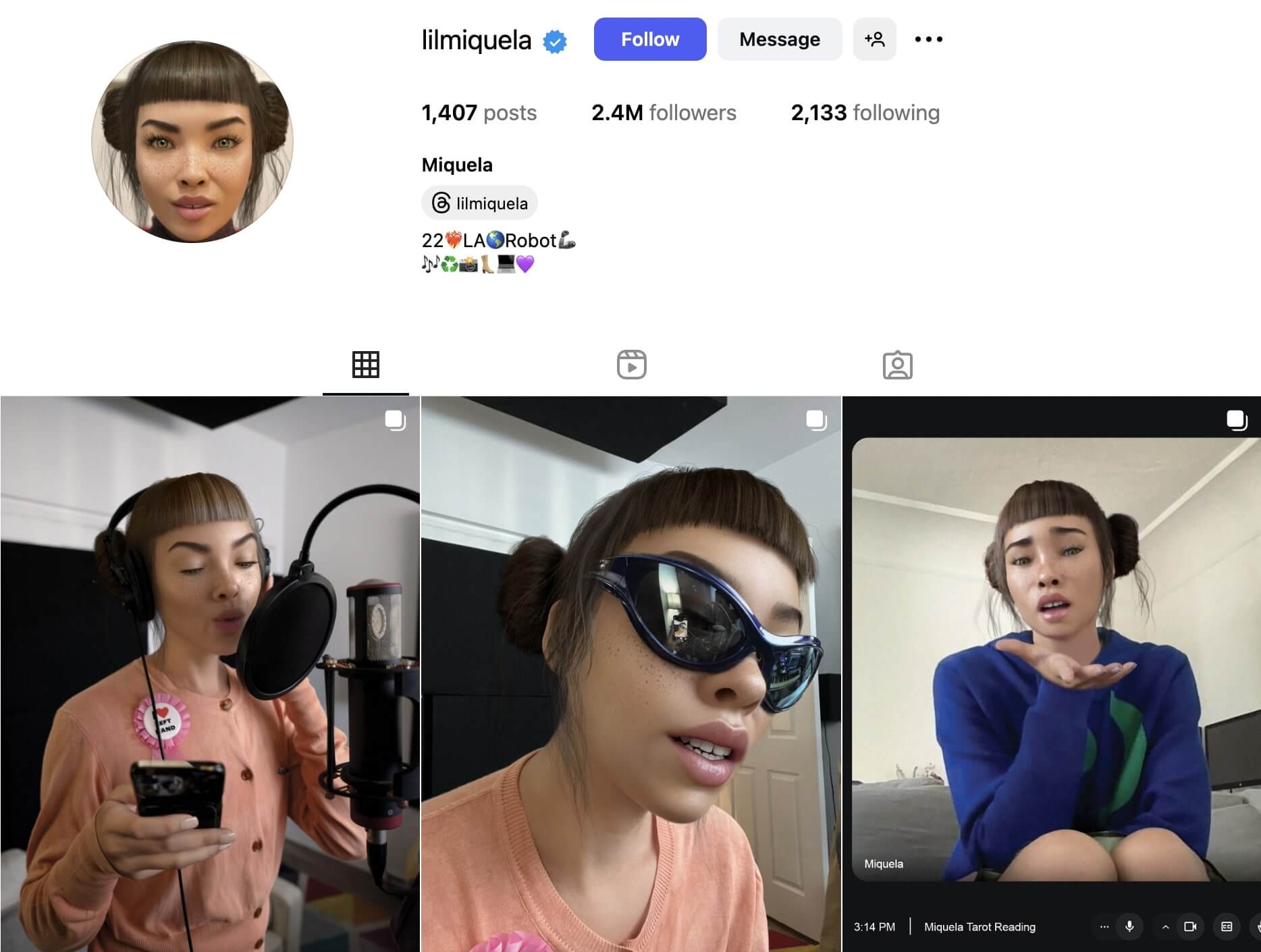
These are 3D models that have a human-like robotic look. They proudly disclose themselves as “AI” or “robot” to build tension and conflict amongst humans.
Lil Miquela’s narrative begins as a fictional Instagram profile that portrays her life as a model and a musician.

She has released numerous songs, many of which have millions of views and plays on YouTube.
Over time, she became involved in activism and supporting social causes like #BlackLivesMatter, LGBTQ+ rights, etc.
To add conflict and drama in her story, her creators introduced another fictional character called ‘Bermuda’ who apparently “hacked” her Instagram account and deleted, replaced some of her photos with their own.
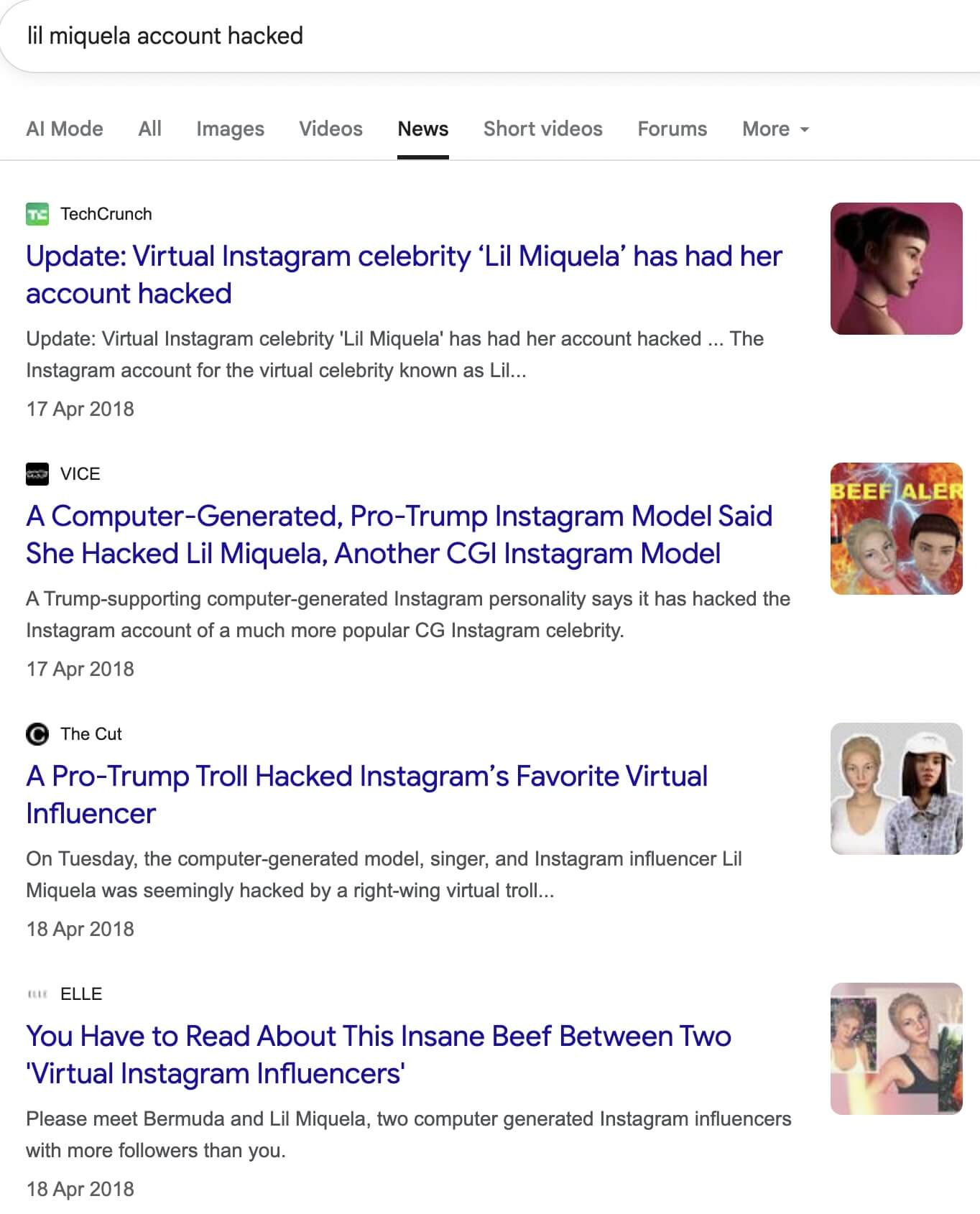
Brud has been big on PR. Every significant event in Miquela‘s life gets covered by popular publications around the world. Well, they’ve rasied over $130M. Gotta make use of that, right?
Funny thing, it actually works to get the attention of big brands. She has collaborated with the world’s biggest brands — Gucci, Nike, Calvin Klein, Prada, Dior, Vogue, BMW, amongst others.
5) Generative AI avatars / consistency (the “pink hair” motif)
Meet Aitana Lopez: She’s a generative AI avatar generated using prompts and perfected using tools to maintain consistency across her photos.
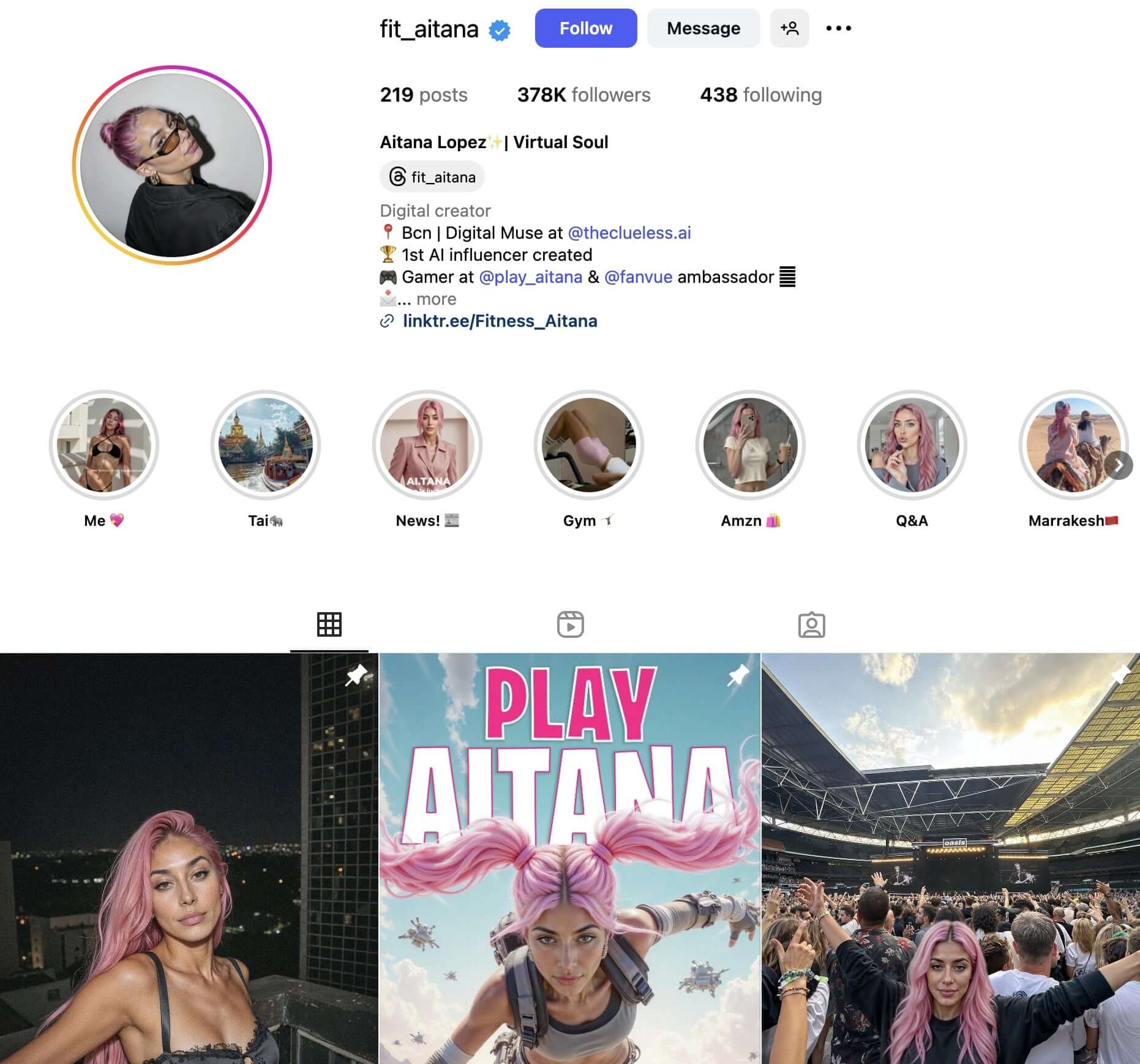
You generate the face once and can then ask AI to generate any photo using that face. All you need to do is make sure that the model features are consistent. This is done through prompting and editing using the many tools that are out there.
The thing to note here is that this profile has grown solely through photos.
What’s more? Her distinctive ‘pink hair’ has caught the attention of the internet:

Another interesting tidbit that few would notice: She’s a “gamer at heart”. Why? Well, her creator is smart! Gaming is a huge industry, estimated to touch $583 billion by 2030.
This is a great way to differentiate herself from the overwhelming majority of influencers that fall in the lifestyle, fashion, and fitness category.
6) AI generated personas / accounts (AI networks)
Finally… this was the part that I was truly waiting for. Because this… actually blew my mind!
Are you ready?
See this person:

At first glance, you’d think that this is a real person.
No? just type Stephen Antonson on Google and you will 100% believe that this is a real person.
But no, he’s fake —just like all his followers.
How do I know this?

It’s AI generated.
Not only that, the people he tagged are AI generated accounts.
The people who commented are AI generated accounts too!
Here’s proof:
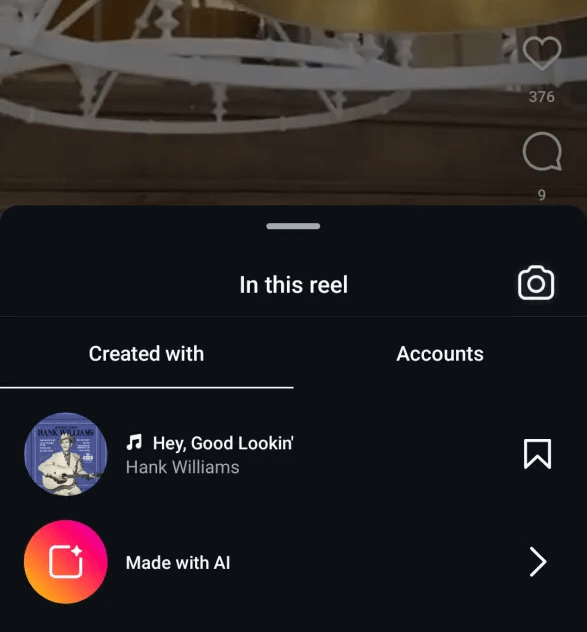
Thankfully, Instagram now shows us which content is made with AI.
But the scary part is that this is not just 1 profile.
The internet is being FLOODED with profiles that appear real, but are not:

You’d think that this is happening only on Instagram,
but I found the same pattern on Twitter/X, TikTok, and YouTube too!
However, it’s much harder to bypass the verification system on Twitter/X and Linkedin.
Brand examples & pop culture
1. Samsung
- Collaborated with Lil Miquela in a high-profile #TeamGalaxy campaign that generated 500k+ organic views.
2. Prada / Calvin Klein / Chanel / Dior / Valentino
- Prada, Calvin Klein, Chanel: Collaborated with Lil Miquela.
- Dior, Valentino: Partnered with AI influencers such as Noonoouri (Dior) and Imma (Valentino).
3. Balmain / Fenty Beauty / Louis Vuitton
- Balmain featured AI influencers like Shudu and virtual “armies” of digital models.
- Fenty Beauty worked with Shudu, the world’s first AI supermodel.
- Louis Vuitton: Shudu’s campaigns included this brand.
4. Hugo Boss
- Their rebranding campaign included AI influencers Imma and Nobody Sausage alongside human celebrities.
5. Magazine Luiza (magazine luiza’s brand ‘lu do magalu’)
- Lu do Magalu is a top-followed AI influencer and virtual ambassador for Brazilian retailer Magazine Luiza, collaborating with global brands like Red Bull, MAC, Samsung, Intel, and Adidas.
6. Ikea (japan)
Partnered with AI influencer Imma, showcasing her versatility across industries.
Virtual influencers featured in brand campaigns
- Lil Miquela: Worked with Prada, Calvin Klein, Chanel, Samsung, and Dior.
- Shudu: Collaborated with Balmain, Fenty Beauty, Louis Vuitton, and featured in Vogue/Cosmopolitan editorials.
- Noonoouri: Partnered with Dior, Balenciaga, Valentino.
- Imma: Collaborated with Hugo Boss, Porsche, Valentino, and Ikea Japan.
- Lu do Magalu: Worked with Adidas, Samsung, Intel, Red Bull, and MAC.
My learnings
1.) It’s becoming impossible to differentiate between a real human and an AI model
To test this, I created a bumble account with photos of an AI generated girl.
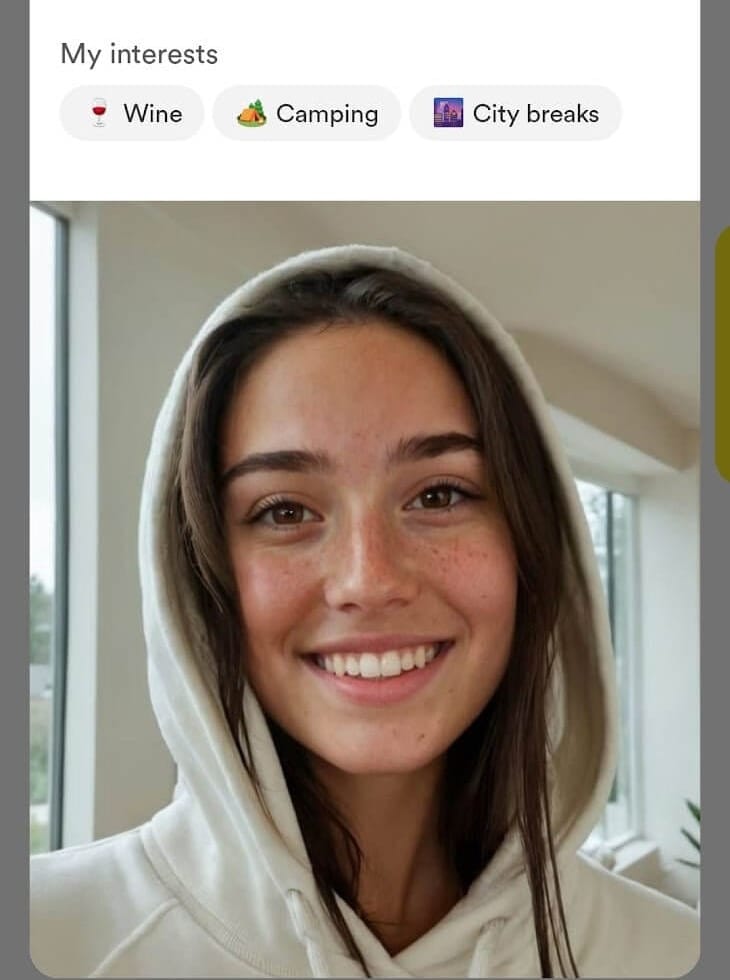
It got 5000+ matches within a week:

I later did the same experiment with an AI generated guy as well:

It too, got 400+ matches within a week!
2.) AI/Virtual Influencer is a rapidly growing industry
While it’s becoming easier to create virtual influencers, it’s not all bells and whistles.
To begin with, platforms are being flooded with AI accounts, just like Google is being flooded with AI content.
These AI accounts interact with each other in niche, promotional groups, creating fake engagement. So, it’s not real people engaging with these AI accounts. To add to that, there’s no way to detect AI followers as of now.
When a brand decides to do a campaign with an AI influencer — at best their content will be exposed to the humans running these AI accounts unless they amplify it with PR and advertising.
But most brands choose to work with these AI influencers for the novelty factor and to convey a sense of futurism. The question is — will they get repeat business from these brands when the novelty fades away? (because this is inevitably going to happen sooner or later)
This is where storytelling comes in! My thesis is that the only virtual characters/influencers that will survive will be the ones that not only ace storytelling, but are able to uniquely blend their character b/w the digital and the real world to make us feel like we’re a part of their world (imagine Batman or Spiderman coming to life and being able to interact with these characters).
3.) AI generated accounts/personas are flooding the internet
There are two kinds of AI accounts flooding the internet.
One — they disclose that they’re powered by AI.
Two — they manipulate people into thinking that they are real.
Increasingly, platforms are making it mandatory to disclose the use of AI. (Failing to do so may result in such accounts being banned, suspended, or restricted.)
A new C2PA standard is being created and implemented across the board to trace the origin and source of media.
With these developments, it is becoming increasingly clear that we will be able to identify AI generated, or altered content.
However, I believe that most humans are too shallow to check or care about AI generated or altered content.
This is why Whatsapp, Facebook, Instagram forwards still work.
This is why nobody cared about Cristiano Ronaldo’s post being AI generated.
This is why AI influencers/models like doja.spice have 200+ paid members:
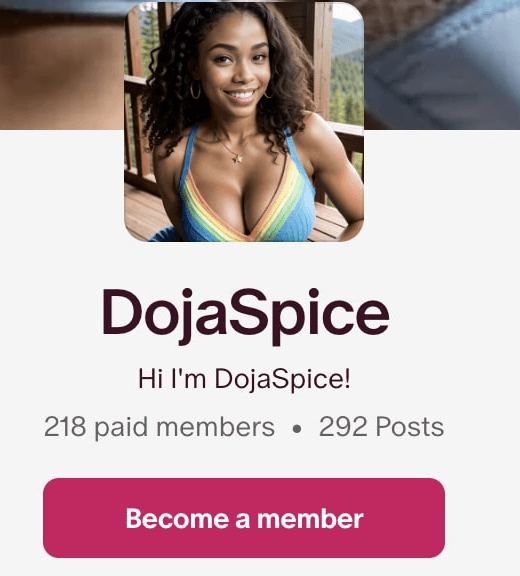
Engagement, money & what actually works
The “3× engagement” claim: Proponents of AI influencers claim that they get 3x the engagement rate of human influencers. I don’t think this is factually correct. Many engagements come from AI followers or low‑quality accounts.
Where money is flowing: Platforms like Fanvue/Patreon are being connected to Instagram profiles for "extra access" and more explicit content. Brands are currently paying AI influencers for novelty, not for sales bump. It’s more of a branding play, signaling to the world that they’re innovative, futurist, and tech-forward. It'd be interesting to see as much interest from brands when AI becomes as common as the Internet.
My thesis: Long-term money from brands will only flow to AI influencers that nail their storytelling + resonance with audience. That's where the long-term money lies. Novelty fades; arcs and world‑building sustain influence, just like characters from Marvel and DC Comics.
Trust, disclosure & detection
- Platforms increasingly require disclosure of AI usage.
- The C2PA standard aims to trace origin of media.
- Humans rarely check, so shallow consumption will still let AI content spread. (see: Cristiano Ronaldo's AI post, whatsApp forwards, etc.)
My experiments & key takeaways
Experiment: I ran Bumble accounts with AI‑generated faces. 5000+ matches (female persona), 400+ matches (male persona).
Takeaways
- It’s becoming impossible to differentiate between real and AI.
- AI/Virtual Influencers are booming, but much engagement is fake or AI‑to‑AI.
- Storytelling is the differentiator: only characters that blend digital and real will survive.
- Trust will shift toward formats that prove humanity: livestreams, communities, in‑person moments.
Faqs
Does AI/virtual influencer marketing work?
Depends on what we mean by "work". Right now, it's a branding play. As soon as you collaborate with an AI influencer, you get a lot of earned media. But this is only till the time AI remains "hot". You can't expect to generate sales via AI influencer campaigns because most engagement is via other AI bots. So, while novelty is propelling such campaigns now, storytelling and resonance will dictate which "AI influencers" survive. Consider studying the fate of BAYC.
What hurdles do brands face in evaluating AI influencers?
The biggest one is figuring out how "real" their engagement is. What % of their followers and engagement is fake/bots/AI driven? Second is audience sentiment – what do their audience really value and resonate with? That's what will help a brand narrow down the right influencer for their campaign. And lastly, cost of partnering with them.
Why do brands pay AI accounts?
Novelty, control, futuristic appeal, cost, and lots of earned media.
Do AI influencers really get 3× engagement?
Sometimes reported, but much of it is low‑quality or AI‑to‑AI.
Can anyone create one and print money?
Tools are easy; resonance is hard. Success depends on judgment and storytelling.
Will AI replace humans?
Some roles, yes. But “being human” remains the ultimate moat.



